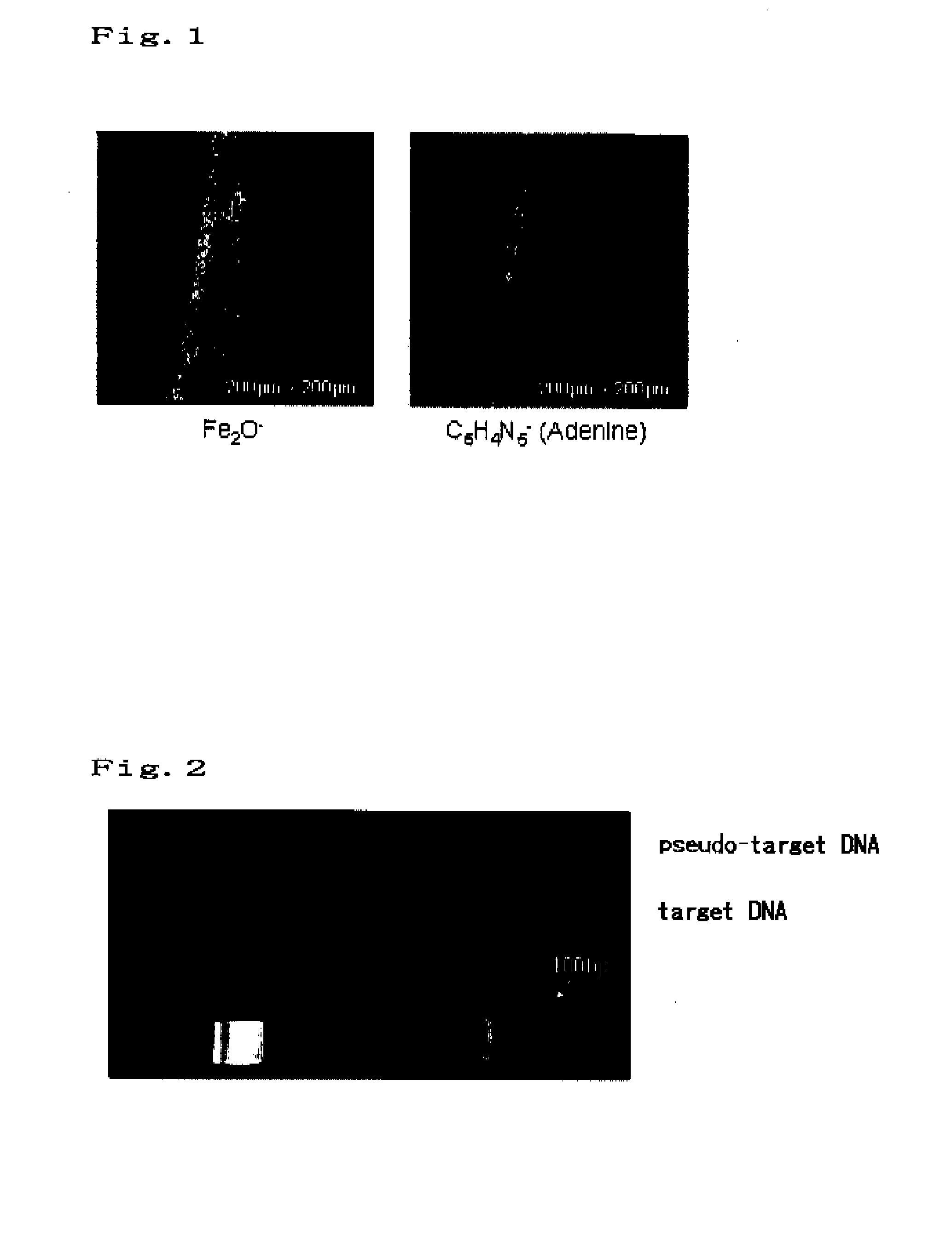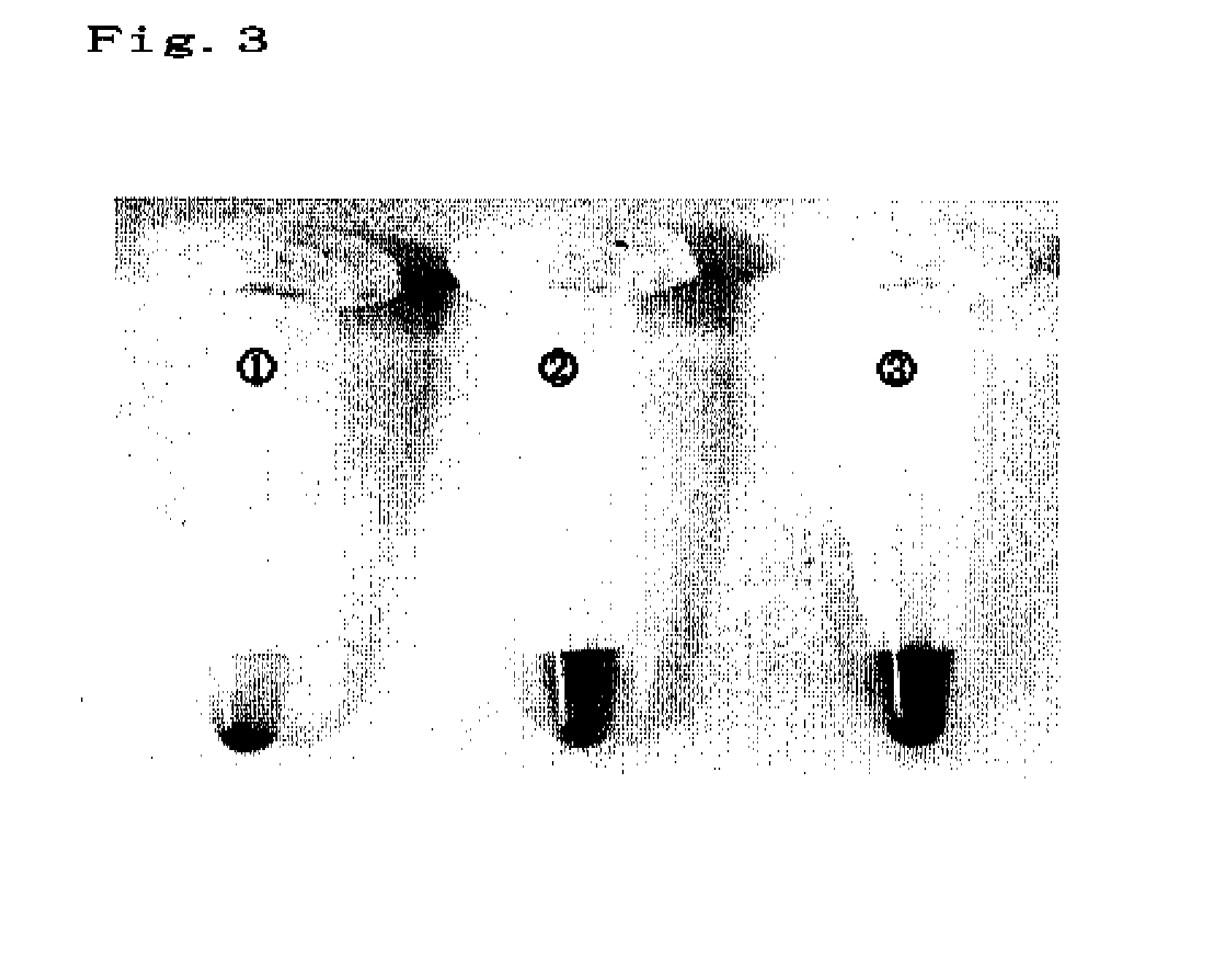Method for detecting target substance utilizing probe desorption
- Summary
- Abstract
- Description
- Claims
- Application Information
AI Technical Summary
Benefits of technology
Problems solved by technology
Method used
Image
Examples
example 1
Production of Magnetic Particles
[0036]Ferrous acetate (II) (15.66 g) was dissolved in a mixture of ethanol (600 ml) and water (9 ml), followed by heating at 75° C. The obtained solution was mixed with ethanol (300 ml) containing dissolved potassium hydroxide (6.9 g), and further heated at 75° C. for 2 hours. Thereafter, the resulting solution was heated to 100° C. and concentrated at a volume of 300 ml (for approximately 2 hours). After being allowed to stand at 75° C. for 5 hours, the resultant was cooled to room temperature. As a result of the above operation, iron oxide particles dispersed in ethanol were obtained.
example 2
Coating with a Dispersant
[0037]Water (70 ml) was added to ethanol containing dispersed iron oxide particles (30 ml) obtained in Example 1 for precipitation of iron oxide particles. Then, the supernatant was removed therefrom, followed by washing. Subsequently, a compound (dispersant) represented by the following formula (I) was dispersed in water (60 ml):
Then, the obtained solution was added to washed iron oxide particles such that the compound was added at a weight that was 20% of that of iron oxide. Ultrasonication was carried out for an hour, followed by overnight agitation at room temperature. Accordingly, water-dispersible magnetic particles were obtained.
example 3
Immobilization of Nucleic Acid by Adsorption
[0038]The water-dispersible magnetic particles obtained in Example 2, DNA having the sequence represented by SEQ ID NO: 1, and MES buffer were mixed and adjusted to final concentrations of 1 g / L, 50 μM, and 0.1 M, respectively. The resulting mixture was shaken overnight and repeatedly subjected to centrifugation, removal of the supernatant, and redispersion. Thus, unimmobilized DNAs were removed. (5′)-GGGCATOGGTCAGAAGGATT-(3′) (SEQ ID NO: 1)
PUM
| Property | Measurement | Unit |
|---|---|---|
| Particle size | aaaaa | aaaaa |
| Responsivity | aaaaa | aaaaa |
| Magnetism | aaaaa | aaaaa |
Abstract
Description
Claims
Application Information
 Login to View More
Login to View More - R&D
- Intellectual Property
- Life Sciences
- Materials
- Tech Scout
- Unparalleled Data Quality
- Higher Quality Content
- 60% Fewer Hallucinations
Browse by: Latest US Patents, China's latest patents, Technical Efficacy Thesaurus, Application Domain, Technology Topic, Popular Technical Reports.
© 2025 PatSnap. All rights reserved.Legal|Privacy policy|Modern Slavery Act Transparency Statement|Sitemap|About US| Contact US: help@patsnap.com



